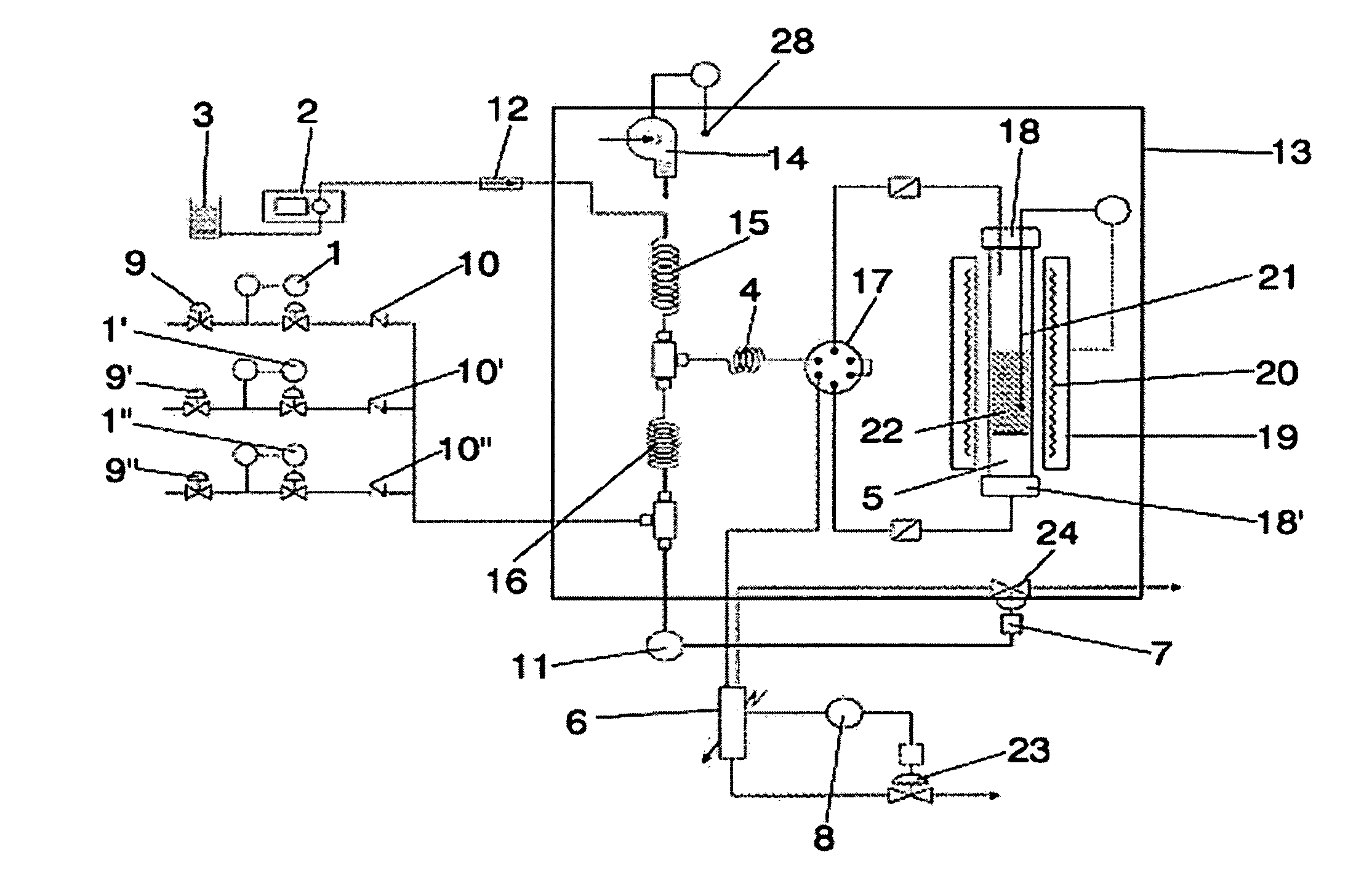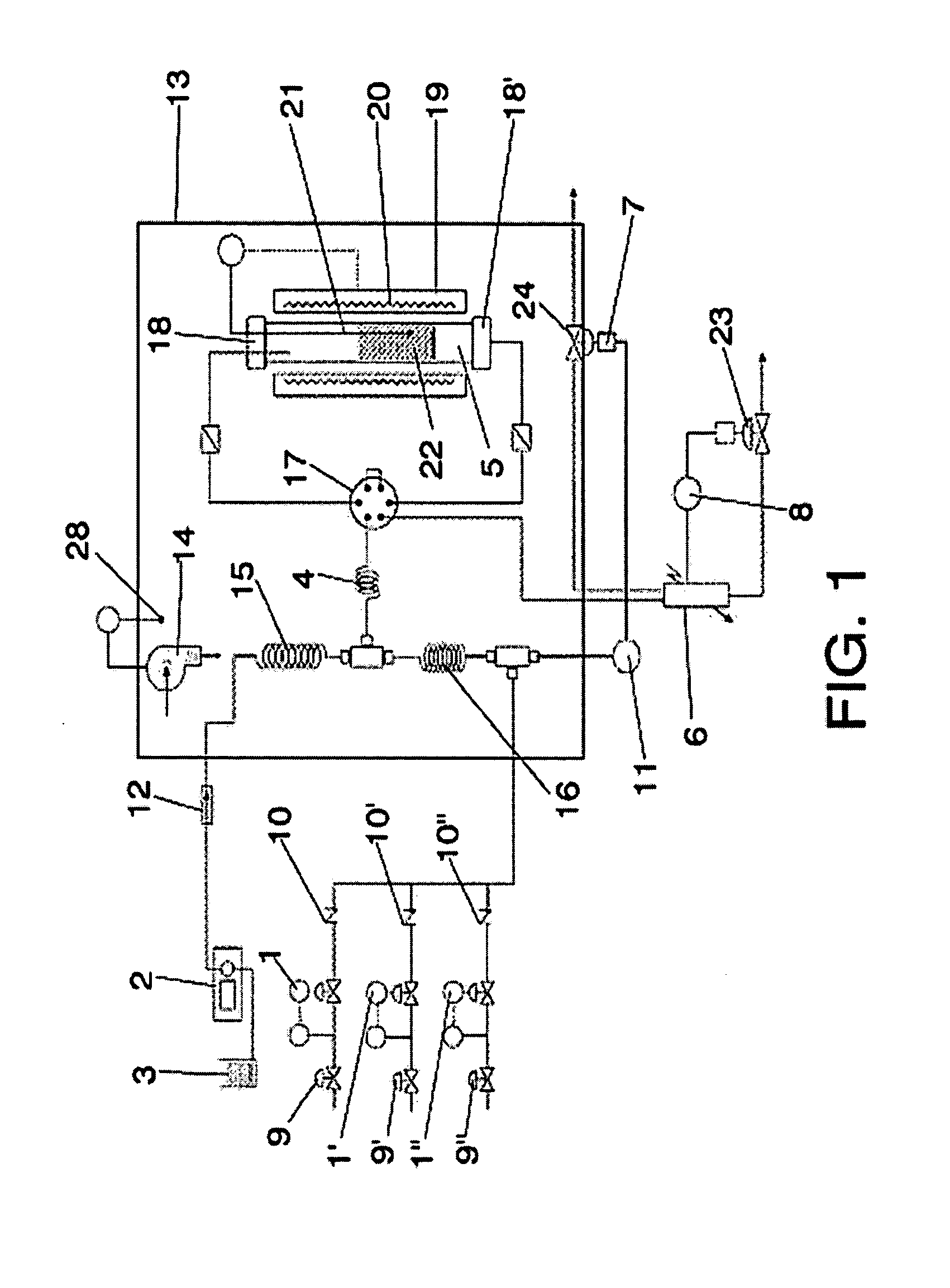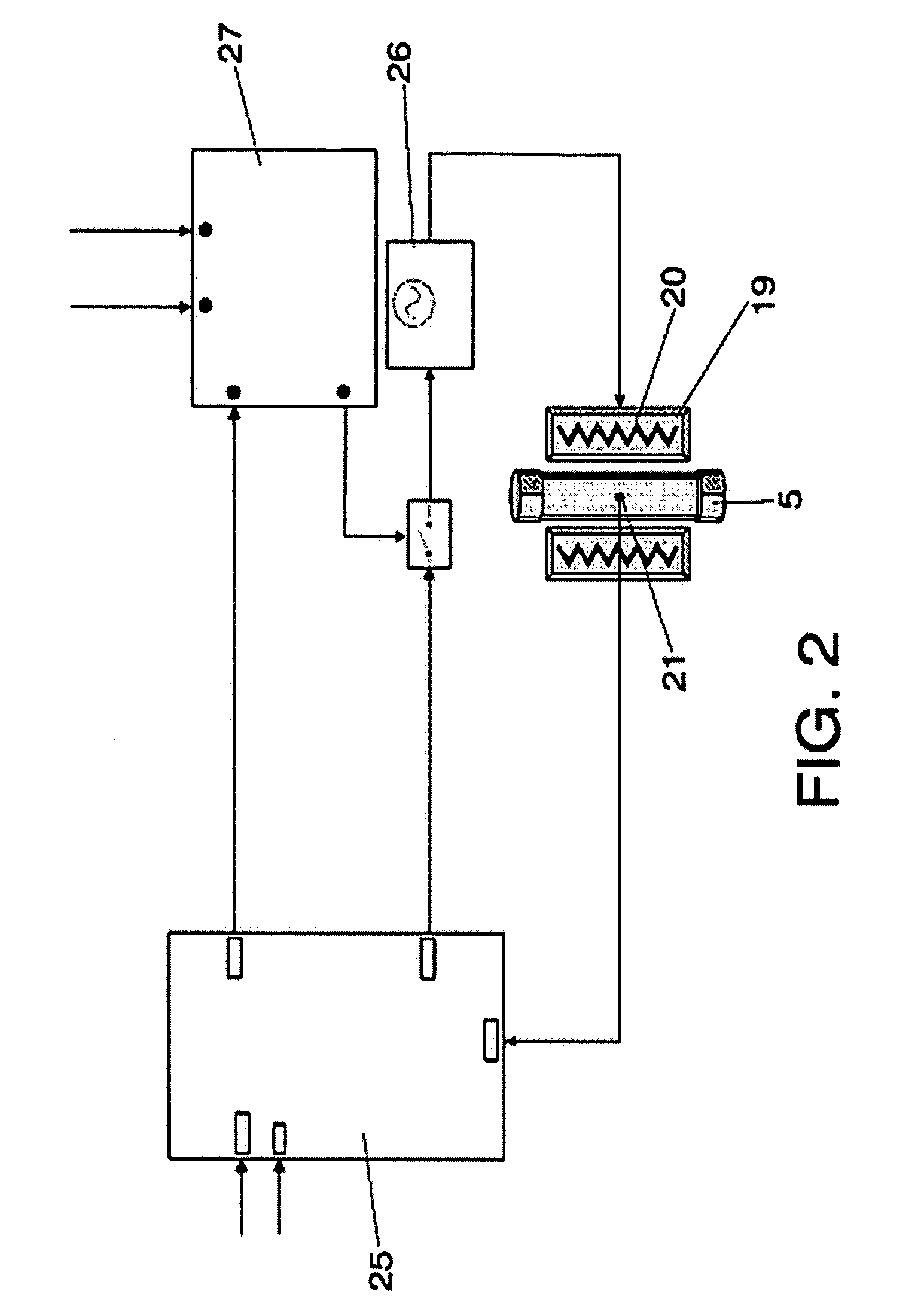When the aim is to measure the catalytic activity of a
solid under conditions close to or identical with those used in the industrial process, the
pilot plants that are currently available display a series of difficulties, especially in situations in which one is working at pressure above atmospheric: Large quantities of catalyst are required, which implies a serious obstacle when its preparation is complicated or very costly.
The activation and stabilisation of the system under the desired operating conditions take up long periods of time (hours, or even days), owing to the
thermal inertia of the equipment and dead spaces.
The majority of the usual facilities do not permit automatic on-line analysis with the reactor which would entail
continuous analysis and with short response times. The complete
automation of the system of a standard facility and its control by computer is a very complex and highly expensive operation.
The achievements in accuracy and reliability in this type of equipment are limited, due both to reasons that are intrinsic to the system (lack of stability of the catalyst in very large time periods) and also extrinsic (difficulty when it comes to having a system free of fluctuations when modifying the reaction parameters).
But, owing to the
dead volume associated with the measurement in the separator, the limitations associated with this technique are very considerable, since in a catalytic microactivity reaction, where the streams of liquid are of the order of 0.05 ml / min, the first drop of sample product of the reaction would be evacuated from the system hours after the start of the reaction.
So, with this system it is impossible in real time to have samples of the reaction products at very short reaction times (of great interest for studies of reaction
kinetics) and without
contamination as a consequence of
dilution inside this separator.
Certain electronic elements for
pressure control upstream available on the market manage to get around these effects, but their use is not possible when there exist condensable vapours in the system.
One of the limitations of this type of analytical system is the long analysis times that are required, which makes it impossible to have analysis at short reaction times. As a possible solution to this problem, H. Ajot developed a catalytic microactivity unit with a system of sampling valves, provided in the furnace, in series and parallel, at the outlet from the reactor, which would permit the gathering and storing of outlet effluents in different compartments of known volume at high temperatures (from 50 to 300° C.
Moreover, the monitoring of the catalytic reaction continues to be limited and conditioned by the long analysis times that are required in this type of system.
So, it is impossible to act on the reaction parameters as a function of the analyses obtained in real time.
But neither of these documents suggests carrying out a complete
material balance of the
chemical reaction under pressure, determining the outlet
stream from the reactor at its pressure and temperature, a measurement which cannot be made in any direct way.
There is very little microactivity equipment described in the literature that is highly automated.
On the contrary, most of them have a very low level of
automation, requiring close attention and dedication by the operator.
But this system, controlled solely by means of computer, does not provide for control of the system in the event of a failure in the computing system, which would leave the system out of control.
So, as has been confirmed, current systems display drawbacks such as the high cost of this type of equipment on the market, even when their performances are low and their level of automation is relatively poor.
 Login to View More
Login to View More  Login to View More
Login to View More 


